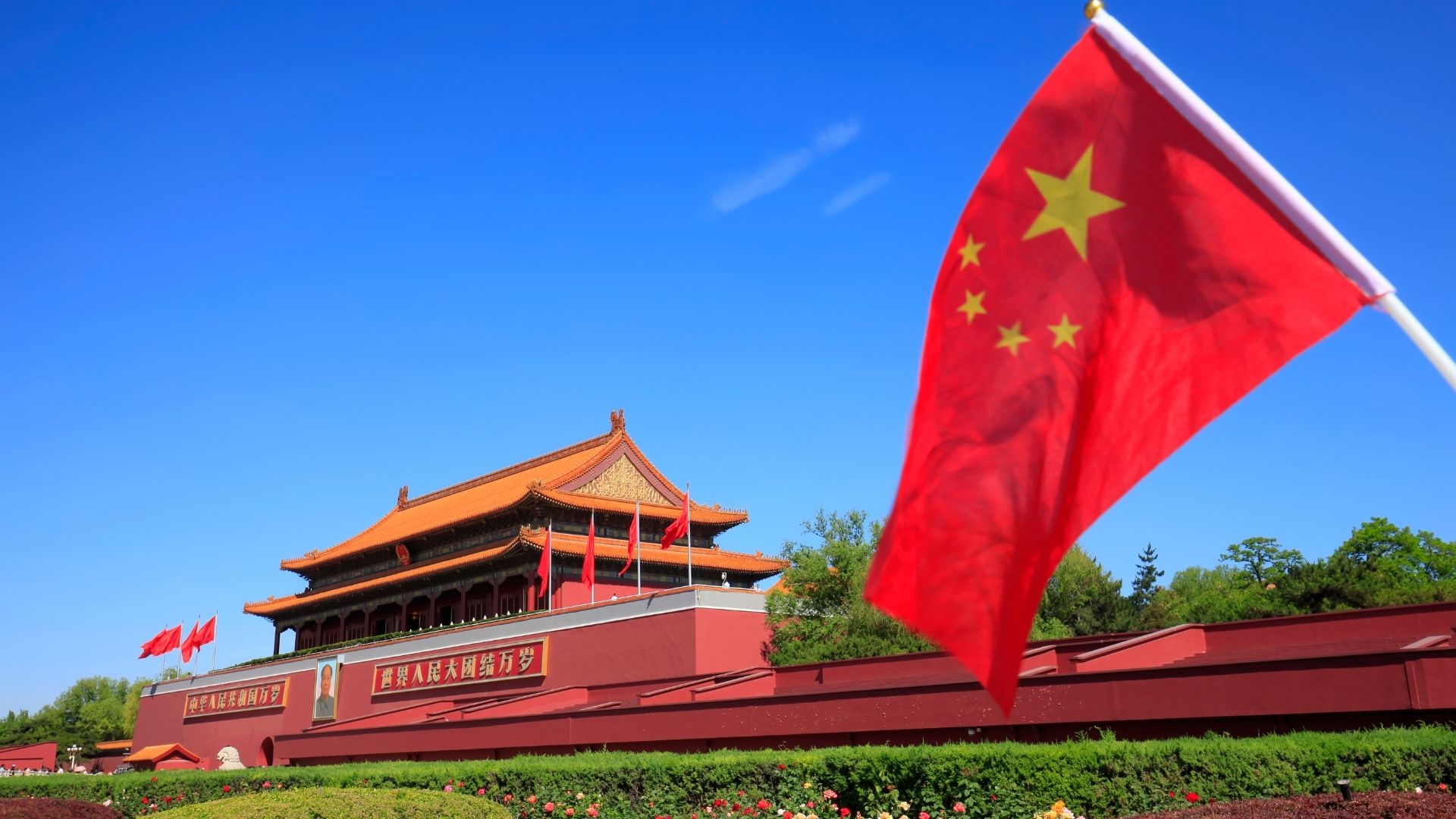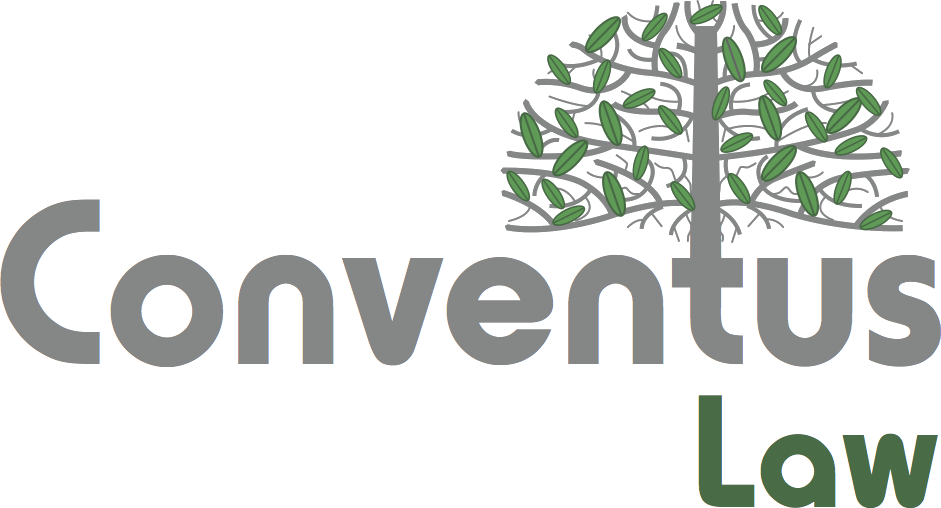China TMT: Annual Review Of 2024 And Outlook For 2025 (II).
In 2024, regulatory reforms in China’s Technology, Media, and Telecommunications (“TMT”) sector were in full swing. On the Artificial Intelligence (“AI”) front, governance efforts gained traction, new policies and standards providing not only continuity with existing legislation but also clear direction for how AI can be applied and integrated across industries. At the same time, China’s telecommunications sector entered a new phase of opening-up and high-quality growth, expanding the range of products and services in the information and communications market. These changes are fuelling corporate innovation, improving service quality, and strengthening the industry’s international competitiveness. Elsewhere in the TMT landscape, rapid developments in areas such as new energy vehicles (“NEVs”), intelligent connected vehicles (“ICVs”), online sales, and internet advertising are driving more diverse regulatory priorities. This wave of innovation is helping to refine and modernise the regulatory framework to keep pace with emerging challenges and opportunities.
As we head into 2025, what are the new opportunities and challenges for businesses? In the following two-part series, we’ll delve into the key developments across the TMT sector in 2024 and explore how they are likely to shape the landscape in 2025.
In this second article, we give an overview of key legislative and enforcement developments in the TMT sector in 2024, focusing on online sales, standardisation of internet advertising, and digital and intelligent transformation of industry, along with a preview of what to expect in 2025. Click here if you missed our first article where we looked back at the past year’s developments in AI governance, empowering the telecommunications industry, and the NEVs and ICVs sectors.
Part IV: Online Sales
In 2024, online sales received a dual boost from central and local authorities through legislative updates and policy guidance. At the national level, new regulations on consumer protection and unfair competition in online markets were introduced, tackling key regulatory challenges and improving market fairness and transparency. Locally, governments rolled out supportive policies to accelerate the growth of livestreaming e-commerce and instant retail, offering guidance for emerging sales models and service offerings. Rural and cross-border e-commerce were also prioritised, with initiatives aimed at revitalising rural economies and expanding international trade. On the enforcement front, the National Medical Products Administration (“NMPA”) has ramped up efforts to combat illegal online sales of pharmaceuticals and medical devices, strengthening regulatory measures to ensure the safety of consumers’ use of medicine and medical devices.
1. Regulatory developments
1) Government bodies join forces to strengthen online sales regulation
In March 2024, the State Council issued the Regulation on the Implementation of the Law of the People’s Republic of China on the Protection of Consumer Rights and Interests (“Regulation”), which officially came into effect in July. The Regulation not only addresses long-standing consumer protection concerns such as false advertising, unfair contract terms, and prepaid consumption fraud but also introduces clear rules for emerging issues in the fast-evolving online sales sector, including livestreaming sales, automatic subscription renewals, and forced bundling. Similarly, in May, the State Administration for Market Regulation (“SAMR”) released the Interim Provisions on Online Anti-Unfair Competition (“Provisions”). The Provisions focuses on strengthening consumer protection by tackling key issues such as fake orders, incentivised positive reviews, and practices that manipulate consumer choices. By doing so, these documents provide a robust regulatory framework to support the standardised, healthy, and sustainable development of the digital economy.
Additionally, the Regulation and Provisions explicitly call for enhanced training and guidance for relevant authorities to ensure the effective implementation of their responsibilities. This reflects the central government’s growing focus on optimising both regulatory bodies and the regulatory model itself. In December, the SAMR issued the Interim Measures for the Coordination of Online Transaction Law Enforcement, which systematically define the scope, principles, processes, and data fields for coordinating online transaction enforcement. This initiative not only refines the enforcement coordination mechanism but also enhances the collaborative governance model between market regulators and online platform operators in the platform economy, providing a more efficient regulatory framework for its healthy development.
At the same time, local governments across different levels have introduced a series of policy guidelines to support the growth of online sales sectors such as livestreaming e-commerce and instant retail. For example, Beijing released the Measures to Promote the High-Quality Development of Livestreaming E-Commerce (2024–2025), focusing on leveraging livestreaming e-commerce to empower the real economy, drive digital transformation in businesses, and promote the upgrading of new consumption models; Shanghai launched the Three-Year Action Plan for Promoting High-Quality Development of the Livestreaming Economy (2024–2026), aiming to accelerate the high-quality growth of the livestreaming economy, enhance the business environment, and deepen the integration of online and offline commerce; Shenzhen introduced the Action Plan for Promoting High-Quality Development of Instant Retail (2024–2026), positioning the city as a national leader in instant retail and ushering in a new stage of deep integration between e-commerce and brick-and-mortar businesses; meanwhile, Hangzhou took an innovative step by issuing China’s first Compliance Guidelines for Market Regulation in Emerging Business Models of the Platform Economy (Trail), which, for the first time, sets out operational standards for the market supervision of online second-hand goods transactions, classifications of online cross-border goods transactions, classifications of social e-commerce, and the roles of social e-commerce promoters. These documents provide practical and innovative references for the administrative compliance management of emerging business models in the platform economy.
2) Rural and cross-border e-commerce in the spotlight
Developing rural e-commerce is a crucial initiative and a key enabler for innovating business models, transforming agricultural development, and boosting rural consumption. In March, the Ministry of Commerce, together with eight other departments, issued the Implementation Opinions on Promoting High-Quality Development of Rural E-Commerce. These opinions propose a multi-faceted approach, including building multi-tiered comprehensive service platforms for rural e-commerce, accelerating the construction of modern logistics and distribution networks, and developing a diverse range of new rural e-commerce players, aiming to build a well-equipped, dynamic, smoothly operating, and highly efficient rural e-commerce service system within five years.
Meanwhile, cross-border e-commerce, as a new business model and approach to foreign trade, is receiving increasing policy support. In June, the Ministry of Commerce, together with eight other departments, jointly issued the Opinions on Expanding Cross-Border E-Commerce Exports and Promoting the Development of Overseas Warehouses. These opinions aim to promote the expansion of cross-border e-commerce exports, optimise the layout of overseas warehouses, and accelerate the development of new drivers for foreign trade through measures such as financial support, logistics infrastructure development, and the optimisation of regulation and services. In September, the State Taxation Administration released the Operating Guidelines for Export Tax Refunds (Exemptions) on Cross-Border E-Commerce Exports from Overseas Warehouses, providing detailed tax guidance to cross-border e-commerce businesses, helping the industry adapt to new development challenges, and promoting the robust growth of the overseas warehouse model. In November, the General Administration of Customs issued the Announcement on Further Promoting the Development of Cross-Border E-Commerce Exports, optimising export regulation measures and offering strong policy support for the high-quality development of cross-border e-commerce.
2. Enforcement developments
NMPA continues to strengthen online sales regulation for pharmaceuticals and medical devices
To maintain order in the online pharmaceutical and medical device market and ensure consumer safety in the use of medicine and medical devices, the NMPA has continued to strengthen its regulatory efforts, maintaining a stringent approach towards illegal activities. From January to the end of 2024, the NMPA has published the fourth, fifth, sixth, and seventh batches of typical cases of illegal online pharmaceutical sales, along with the fifth, sixth, seventh, and eighth batches of illegal online medical device sales cases. These cases involve serious public safety risks, such as operating without a license and selling non-compliant products, and the responsible parties have been legally sanctioned.
3. Outlook for 2025
In 2025, as the digital economy continues to grow, we expect to see both more opportunities and challenges in emerging online sales sectors such as the platform economy and livestreaming e-commerce.
On one hand, for platform economy, regulatory authorities will maintain their focus on issues such as market monopolies, unfair competition, data security, and privacy protection within internet platform businesses. Long-standing consumer concerns, such as price discrimination and lack of transparency in platform commissions, will also become key areas of regulation. On the other hand, livestreaming e-commerce, an important part of the digital economy, is expected to move towards more standardised and sustainable development in 2025. Regulatory authorities may impose stricter qualifications checks on livestreaming e-commerce practitioners and tighten content regulations, focusing on actions such as false advertising, exaggerated claims, and vulgar marketing. These measures will aim to protect consumers’ right to know and their legitimate rights and interests.
Part V: Standardisation of Internet Advertising
In 2024, the internet advertising sector experienced more refined regulation and governance. From one perspective, the SAMR released relevant guidelines, providing further clarification on advertising labelling rules. These guidelines stipulate that internet advertisements (“ads”) must be made easily identifiable through various means, such as text and voice, ensuring that consumers can clearly distinguish advertising content from other information. At the same time, in response to the rapid development of AI and deep synthesis technologies, relevant documents introduced guiding provisions to promote the standardised application of these technologies in advertising. From the other perspective, a nationwide campaign was launched to rectify ads in livelihood areas such as healthcare, pharmaceuticals, and food, with the goal of tackling long-standing advertising issues that have caused consumer concerns and promoting more regulated industry practices.
1. Regulatory developments
SAMR issues guidelines to tackle issues with internet advertising labelling
With the ongoing innovation and development in the advertising industry, the forms of internet advertising have become increasingly diverse. To prevent these ever-evolving advertising formats from misleading consumer decisions due to a lack of effective regulation, the SAMR released the Internet Advertising Identifiability Enforcement Guidelines (“Guidelines”) in August 2024. The Guidelines aims to standardise the enforcement of regulations related to the identifiability of internet ads, helping consumers distinguish between advertising and non-advertising information, thereby safeguarding their legitimate rights and interests.
From one angle, the Guidelines refine the rules and methods for labelling internet ads, specifying that advertisers can use text labels, voice prompts, and other means to enhance the identifiability of ads. From a different angle, the Guidelines reinforces platform responsibility, emphasising the obligations of internet platform operators. Furthermore, the Guidelines includes guiding provisions for AI and deep synthesis technologies, actively exploring regulatory practices for the standardised use of AI in internet advertising. The introduction of the Guidelines not only strengthens the protection of consumers’ right to know, but also enforces the legal obligations for advertising labels. It provides crucial support for the standardisation and refinement of internet advertising regulation and enforcement.
2. Enforcement developments
Regulation of ads in livelihood areas continuously strengthened to protect consumer rights and interests
In April 2024, the SAMR held a national symposium on advertising regulation, outlining key regulatory tasks for the year and emphasising the need to “conduct special campaigns to strengthen the compliance supervision of internet platform ads”. From April to November, SAMR organised a nationwide special action to regulate ads in livelihood sectors such as healthcare, pharmaceuticals, and food. This initiative built on previous efforts to address false ads for “miracle doctors” and “miracle medicines”, foods, and daily chemical products, etc., while also intensifying oversight of false ads for myopia prevention products and various commercial training-related ad violations. Meanwhile, cities like Beijing and Shanghai actively responded to the call, launching local enforcement activities tailored to regional needs, aiming to bring more targeted measures to regulate the advertising market. These special campaigns not only focused on resolving ads-related issues in livelihood areas but also aimed to safeguard consumers’ legal rights, fostering a fairer, more transparent, and healthier market environment, thus laying a solid foundation for a positive consumer ecosystem.
3. Outlook for 2025
In 2025, we expect that advertising issues related to healthcare, pharmaceuticals, food, and other sectors directly affecting consumer health and safety will remain a key focus for regulation. The supervision of internet advertising in livelihood areas will continue to be robust. At the same time, with the rise of new forms of internet advertising such as “store explorations” and “livestreaming marketing”, addressing the associated issues may also become a priority for regulators. For example, in response to concerns such as false recommendations, hidden ads, and misleading information, authorities may introduce more detailed policies and regulations to promote the industry’s standardised development. Additionally, the regulation of content review for internet ads is likely to be further strengthened.
Part VI: Digital and Intelligent Transformation of Industry
In 2024, the digital and intelligent transformation of industry entered a new phase of concentrated policy advancement. The Ministry of Industry and Information Technology (“MIIT”) and other relevant departments released a series of implementation plans and action guidelines, covering key areas such as industrial internet, the Internet of Things (“IoT”), and industrial robotics, to comprehensively support the digital and intelligent upgrading of industries such as manufacturing, power, and raw materials. At the same time, the release of several pilot projects and case studies has provided valuable scenario references for the new industrialisation transformation. These initiatives offer policy guarantees and resource support for the development of the industrial ecosystem and are expected to significantly enhance the digitalisation of China’s industrial system, contributing to the creation of a more efficient and innovation-driven modern industrial landscape.
1. Regulatory developments
Collaborative efforts drive digital and intelligent transformation across industries
Looking back at 2024, a series of policies and guidance documents were introduced, providing clear direction for the intelligent transformation and upgrading of various industries.
In the manufacturing sector, in January, the MIIT, along with the Ministry of Education, Ministry of Science and Technology, and five other departments, released the Implementation Opinions on Promoting the Innovative Development of Future Industries. This document clearly emphasised focusing on the manufacturing sector as the main battleground and highlighted six key areas for development, including future manufacturing, future information, future materials, and future energy. This also includes developing innovative flagship products such as humanoid robots, quantum computers, and brain-computer interfaces to seize opportunities arising from the new round of technological revolution and industrial transformation to support the advancement of new industrialisation. In September, MIIT published the Implementation Plan for the Digital Transformation of the Power Equipment Manufacturing Industry, which centres on the deep integration of new-generation information technologies with the power equipment manufacturing industry, with smart manufacturing as the primary goal. This plan proposed a classified and graded approach to advancing the digital transformation of the power equipment manufacturing industry. In October, MIIT, together with the SAMR and other departments, issued the Notice on the 2024 Smart Factory Gradient Cultivation Action, aiming to build a “three-in-one” work system for smart factories, solutions, and standards, to create an “upgraded version” of smart manufacturing. In December, MIIT, together with two other departments, released the Digital Transformation Implementation Guidelines for Manufacturing Enterprises, outlining five key parts: basic principles, phased implementation, breakthrough scenarios, classified advancement, and policy support, providing clear direction for manufacturing enterprises to apply digital technologies to achieve transformation and upgrade, and further consolidating the foundation for high-quality development in the manufacturing sector.
In the raw materials industry, in January, MIIT and eight other departments issued the Digital Transformation Plan for the Raw Materials Industry (2024-2026) (“Plan”). Starting from the main tasks and safeguard measures, the Plan proposes specific solutions to address the challenges such as insufficient understanding of digital transformation, significant disparities in the foundation for digital transformation, and the lack of in-depth integration of digital technologies like AI. At the same time, the Plan also provides detailed digital transformation guidelines in the form of annexes for industries like petrochemicals, steel, and non-ferrous metals.
In the industrial robotics sector, in July, MIIT revised and released the Industry Norms for Industrial Robotics (2024) and the Management and Implementation Measures for Industrial Robotics Industry Norms (2024), aiming to further regulate the management of the industrial robotics sector, guide healthy competition among enterprises, and foster high-quality development.
Furthermore, as emerging technologies like AI, the IoT, and Industrial Internet play an indispensable role in the process of new industrialisation, related departments have released several reference guidelines, such as the IoT Standards System Construction Guide (2024), the Industrial Internet and Power Industry Integration Application Reference Guide (2024), and the Notice on Promoting the Development of Mobile IoT for “Smart Connectivity of All Things”, to accelerate technological integration and industrial transformation, and to provide vital support for the digital and intelligent transformation of industries and the development of new industrialisation.
2. Enforcement developments
Multiple demonstration cases unveiled
In 2024, a series of demonstration cases were introduced, providing robust support for the digital and intelligent transformation of various industries. In March, the MIIT released the list of industrial internet pilot projects for 2023, covering more than a hundred pilot projects across seven categories, including new technologies, factories, and platforms. These projects focus on hot areas such as large models (“LLMs”), big data, edge computing, blockchain, and 5G factories, showcasing the vast potential of industrial internet in technological innovation and industrial applications. In September, MIIT published the Smart Manufacturing Typical Scenario Reference Guide (2024), offering practical examples for the gradient cultivation of smart factories, breakthroughs in smart manufacturing solutions, and the development and application of standards, further promoting the high-quality development of smart manufacturing. In November, MIIT released the 2024 list of typical cases for the IoT empowering industry development, focusing on four key areas: industry applications, social governance, livelihood consumption, and the integration of new industries. These cases covered various directions, including smart manufacturing, smart energy, smart logistics, and smart connected vehicles, comprehensively summarising typical experiences and promoting excellent practices. These demonstration cases and reference guides will provide innovative models for industry transformation, further advancing the deep integration of digital technologies with the real economy and injecting new momentum for high-quality development.
3. Outlook for 2025
As we head into 2025, we expect that the digital and intelligent transformation of industry will be characterised by large-scale advancement, differentiated policy support, and the deeper application of technologies. From one viewpoint, with the continued strengthening of policy support and ongoing technological progress, the pace of transformation across various sectors will accelerate significantly, gradually creating more widespread and multidimensional scale effect. Conversely, government departments may introduce more detailed and differentiated policy frameworks tailored to the characteristics and development stages of different industries and regions, establishing adaptive routes for digital and intelligent transformation. Furthermore, with the continued maturation of AI technologies, particularly LLM technologies, industrial application scenarios will become more diverse and in-depth. Both traditional manufacturing and emerging digital economy industries will see an increasing number of companies actively embracing digital and intelligent technologies to enhance productivity, optimise resource allocation, and strengthen core competitiveness.






